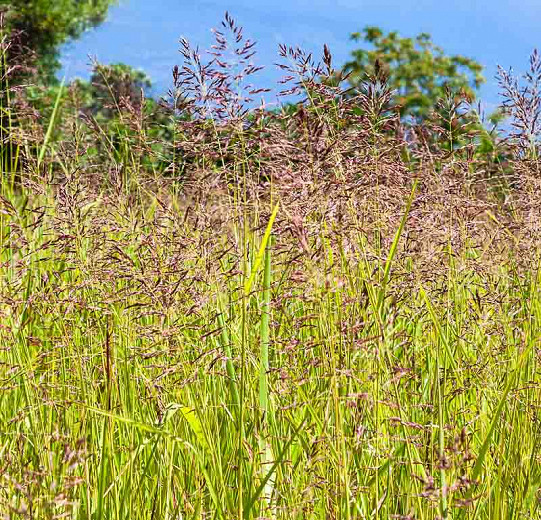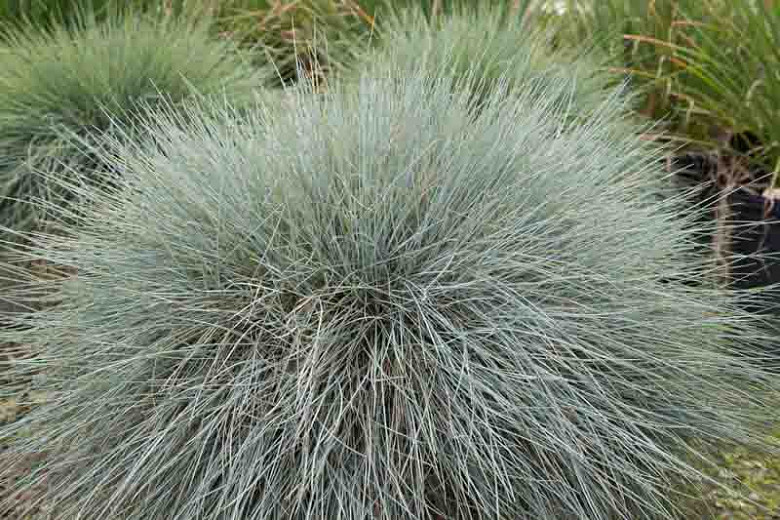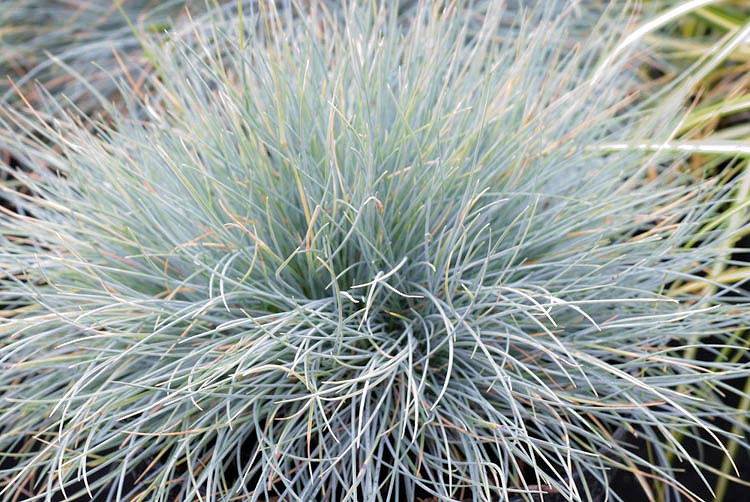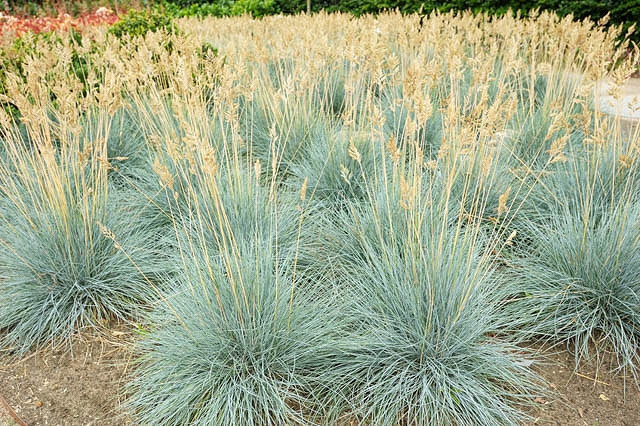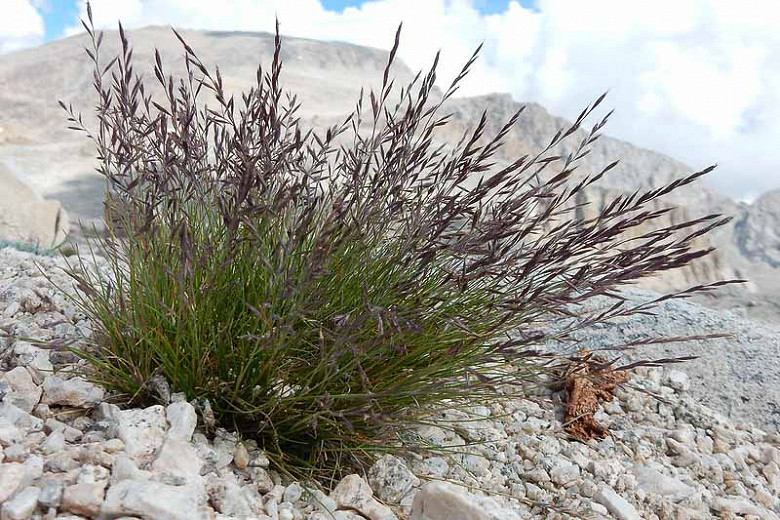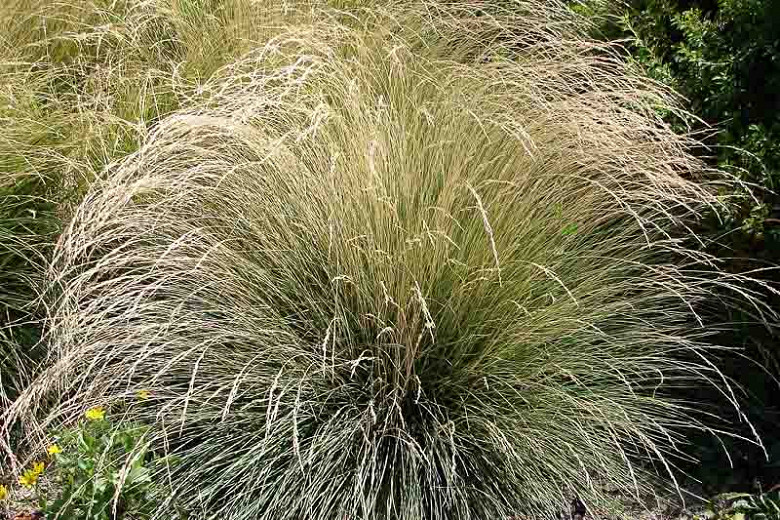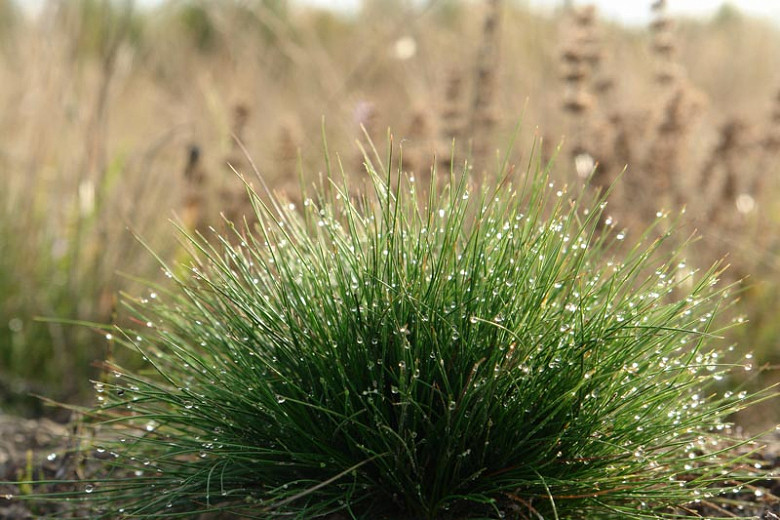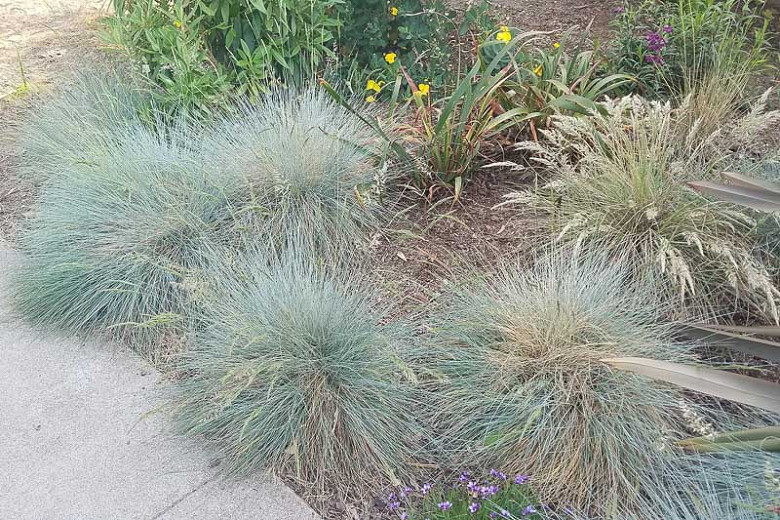Festuca rubra (Red Fescue)
Popular as mown turfgrass, Festuca rubra (Red Fescue) is a cool-season grass forming tufts of arching, narrow, dark green blades. One of the most shade tolerant lawn grasses, it tolerates many habitats, and climates and is not fussy about soils. It makes a lovely lush green grass for shady spots where most turfgrasses will not grow. It is beneficial for erosion control and is a good lawn substitute.
Popular as mown turfgrass, Festuca rubra (Red Fescue) is a cool-season grass forming tufts of arching, narrow, dark green blades. One of the most shade tolerant lawn grasses, it tolerates many habitats, and climates and is not fussy about soils. It makes a lovely lush green grass for shady spots where most turfgrasses will not grow. It is beneficial for erosion control and is a good lawn substitute. Unmowed, Red Fescue creates an attractive lush meadow look. It is often mixed with other varieties for the production of dense and compact turf. Red Fescue is also a nutritious forage grass for wild and domestic animals, but it is resistant to browsing by deer.
- Grows up to 12-24 in. tall and wide (30-60 cm). Runs strongly by creeping rhizomes.
- Performs best in full sun to part shade in medium moisture, well-drained soils. This grass has a good drought tolerance.
- Does not need to be cut back but can be cut back in summer if desired. Can be mowed at about 2 to 3 in. (5-7 cm).
- Propagate by division.
- Native to Europe and North America. Festuca rubra may become weedy or invasive in some U.S. regions or habitats and may displace desirable vegetation if not properly managed.
- Find where this species is invasive in the United States.
- Discover beautiful U.S. native plant alternatives.
Requirements
| Hardiness | 2 – 7 |
|---|---|
| Climate Zones | 1, 1A, 1B, 2, 2A, 2B, 3, 3A, 3B, 4, 5, 6, 7, 8, 9, 10, 14, 15, 16, 17, 18, 19, 20, 21, 22, 23, 24, A2, A3 |
| Plant Type | Ornamental Grasses |
| Plant Family | Festuca – Fescues |
| Exposure | Full Sun, Partial Sun |
| Season of Interest | Spring (Mid,Late)Summer (Early,Mid,Late)Fall |
| Height | 1' – 2' (30cm – 60cm) |
| Spacing | 12″ – 24″ (30cm – 60cm) |
| Water Needs | Low, Average |
| Maintenance | Low, Average |
| Soil Type | Loam, Sand |
| Soil pH | Acid, Neutral |
| Soil Drainage | Moist but Well-Drained, Well-Drained |
| Characteristics | Showy |
| Native Plants | United States, Alaska, California, Midwest, Illinois, Indiana, Iowa, Michigan, Minnesota, Missouri, Nebraska, North Dakota, Ohio, Wisconsin, Northeast, Connecticut, Delaware, Maine, Massachusetts, Maryland, New Hampshire, New Jersey, New York, Pennsylvania, Rhode Island, Vermont, Pacific Northwest, Idaho, Oregon, Washington, Rocky Mountains, Colorado, Montana, Utah, Wyoming, Southeast, Alabama, Georgia, Kentucky, North Carolina, South Carolina, Tennessee, Virginia, West Virginia, Southwest, Nevada, Arizona, New Mexico, Texas |
| Tolerance | Deer, Drought |
| Attracts | Butterflies |
| Garden Uses | Ground Covers |
| Garden Styles | Informal and Cottage, Prairie and Meadow |
